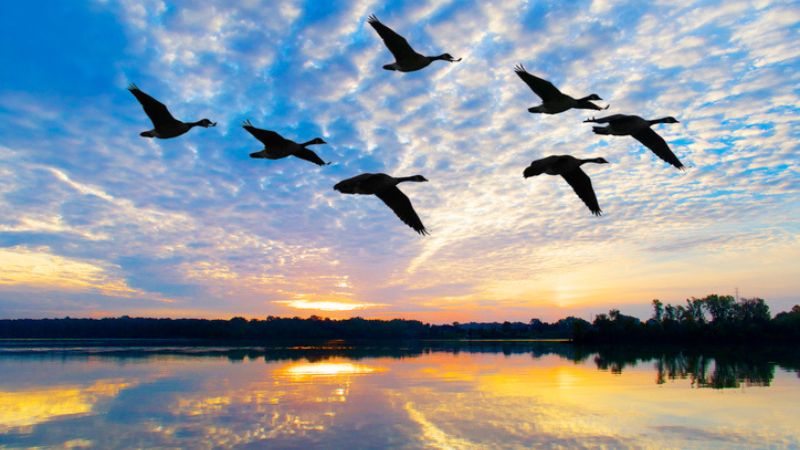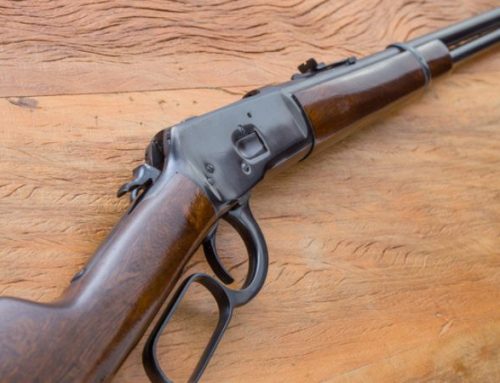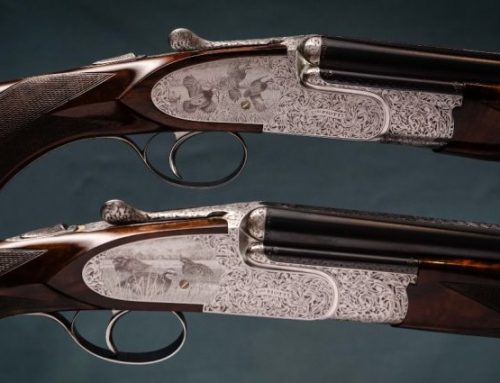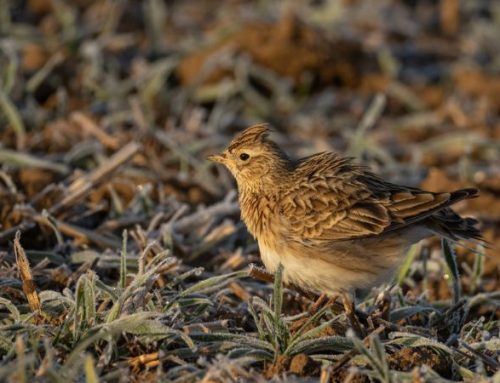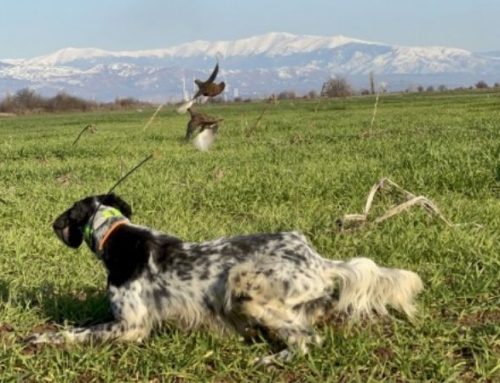Each year, with the arrival of autumn, the sky above Eastern Romania comes alive with large V-shaped formations cutting through the air in majestic order.
These are geese—the silent yet unmistakable protagonists of the great migration that links the Arctic to the heart of the Mediterranean.The wetlands and farmland near the Danube Delta are one of the key points along this ancient migratory route. Here, among lagoons, reed beds, and flooded fields, geese find rest, water, and nourishment. In this paradise, the patient and respectful hunter can experience one of the noblest, most authentic, and most challenging forms of hunting that exist.
The Species and Their Habits
Several species of geese are regularly observed in the Romanian territories bordering the Delta, including:
-
Greater White-fronted Goose (Anser albifrons) – agile, cautious, and the most common.
-
Greylag Goose (Anser anser) – large and resilient, often seen in small groups.
-
Red-breasted Goose (Branta ruficollis) – a protected, non-huntable species seen in colder periods.
These geese overwinter near the Danube Delta after nesting in Russia, Siberia, and the northern Arctic regions. They typically arrive between late October and mid-November, often heralded by major weather changes: cold fronts, clear skies, and favorable winds.
The geese feed mainly in cultivated fields—corn stubble, cereals, and winter wheat—but seek refuge and rest in the waters of the Delta’s canals and adjacent lagoons. They fly in compact formations, always with alert sentinels. These are wary, intelligent animals, capable of recognizing traps and deception.
Goose Hunting Techniques: An Art of Precision
Goose hunting in the Danube Delta is among the most demanding and refined forms of the sport. It requires preparation, an understanding of the terrain, knowledge of animal behavior, and skillful use of calls.
When to Hunt
The ideal season runs from mid-November to the end of January, depending on weather conditions. Cold days with northern winds, overcast skies, and fog are the best: the geese come down to feed and fly lower, more exposed, and more active.
How to Hunt
-
Field Blinds: The most common method. Hunters set up early in the morning in camouflaged hides or pits in corn or wheat fields with wide visibility, arranging realistic decoy spreads using flocked or feathered 3D plastic silhouettes.
-
Water Blinds: Near lagoons and flooded areas. Requires boats and floating equipment but allows for spectacular shots during the geese’s evening return.
-
Use of Calls: Thanks to the professionalism and skill of our guides, geese are lured close by well-executed calls, allowing hunters to shoot at closer range.
Weapons and Ammunition
Goose hunting requires powerful, precise firearms capable of handling long-range shots on large game birds. Most common setups:
-
12-gauge semi-automatic shotguns, with 71 or 76 cm barrels.
-
Full or ¾ chokes, to maintain dense shot patterns at 35–40 meters.
-
Shells with 36 to 42 grams of shot, in lead (where allowed) or steel, using large shot sizes (No. 3, No. 1, or BB).
Due to the birds’ size and durability, every shot must be accurate and well-placed. Every opportunity must be earned.
A Unique Setting: Landscapes and Atmosphere of the Delta
Hunting geese in Romania, in the areas surrounding the Danube Delta, means immersing yourself in an extraordinary landscape: slow-moving canals, low skies, morning fog, and blazing sunsets. The geese arrive with a deep, guttural sound that precedes the flight. Then the whoosh of wings. And finally, their sudden, often fleeting appearance.
This is a hunt of silence, held breath, and absolute concentration. Every success is the result of preparation, patience, and respect.
Days stretch from dawn to late afternoon, with long periods of waiting in an environment seemingly unchanged for centuries. Nights are spent in rustic lodges, with traditional meals, shared stories, and planning for the next day.
Montefeltro and Magic Hunting: The Great Romanian Migration
Montefeltro and Magic Hunting offer specialized programs for goose hunting in Romania, in partnership with expert, vetted local guides. Each expedition is meticulously organized:
-
Pre-built hides and equipment
-
Skilled field guides
-
Flocked American decoys, high-quality calls, and camouflage gear
-
Comfortable lodge accommodation
-
Assistance with licenses, firearms, and logistics
The goal is to offer an authentic, intense, and nature-respecting experience, where the true value lies not just in the game bag but in the memories created.
Goose hunting in the Danube Delta is one of the most fascinating expressions of migration. It’s a challenge, an act of respect toward one of the most majestic wild birds, and a total immersion in a unique European environment.
Testimony from Niccolò
“When I decided to leave for Romania, I never imagined the Danube Delta would affect me so deeply. I had heard stories of those still waters, the hidden canals in the reeds, and the large grey geese landing there on cold winter mornings. But hearing about it and living it are two completely different things.
That first morning, in total darkness, we boarded a boat in utter silence. The cold bit at my hands despite the gloves, and the sky was clear, lit only by a pale moon that seemed to watch us from afar. The only sound was the paddle dipping into the water—slow, rhythmic, almost ceremonial. We advanced like that, immersed in sacred silence, as if the entire world were holding its breath.
At the blind, we settled in. The world shrank to a few meters in front of us, to the opening between the reeds. Then, during the wait, came the first flock. I heard it before I saw it: a deep, powerful sound, like a collective breath descending from the sky. The geese dropped fast, in a movement that seemed chaotic but was truly harmonious, in a way only nature can orchestrate. My heart raced, as if my own instincts had awakened. This wasn’t just hunting—it was something ancient, primal, reaching into the deepest part of me.
Each day in the Delta had a different flavor. One morning, the frost was so harsh that my eyelashes froze, yet I wouldn’t have traded that silent wait for anything—the moment the sky turns orange and the first silhouettes appear on the horizon. Another time, the geese didn’t come, sensing our presence. That too is part of the game, part of the respect.
I’ll never forget the sudden silence broken by a perfectly mimicked call, the instant you realize the geese are turning, descending. The flight against the winter sky—slow, majestic—like a living painting. Every shot was meaningful, never casual. And with each, a silent thank you within me.
In the evening, by the fire, we became men again. No need for many words. Just a look, a firm handshake, a raspy laugh over the crackling wood. The emotions of the day settled like frost on the branches, leaving behind a rare sense of fulfillment.
The Danube Delta isn’t just a place—it’s a rite, a school of patience, listening, presence. It’s a way to reconnect with your truest self—the part modern life makes you forget. And I know I’ll return. Because some experiences don’t fade—they settle in your soul, like the silt of this river, calling you back when you least expect it.”
FAQ – Frequently Asked Questions about Goose Hunting in the Danube Delta
When is the best time to hunt geese in Romania?
From mid-November to late January. The first geese may arrive as early as late October, depending on the weather. The most productive days are cold, cloudy, and windy from the north.
Which goose species can be hunted?
-
Greater White-fronted Goose (Anser albifrons)
-
Greylag Goose (Anser anser)
Note: The Red-breasted Goose (Branta ruficollis) is protected and must not be hunted. Recognizing it is essential for compliance with regulations.
Is advanced experience necessary?
Not necessarily. Outings are guided by experienced professionals who assist every participant. However, it’s a technical and demanding hunt, so experience helps. Patience, respect, and observation are key.
What weapons and ammunition are recommended?
12-gauge semi-automatic shotguns with 71–76 cm barrels, full or ¾ chokes, and 36–42g shells (lead where allowed or steel), with large shot sizes (No. 3 / No. 1 / BB).
What hunting methods are used: stalking, boat, or blind?
Only blind hunting is practiced, in two main types:
-
On cultivated fields with ground-level blinds and decoys.
-
On water from floating blinds, often for evening returns.
Is local support provided?
Yes. Montefeltro and Magic Hunting organize the outings with expert local guides. Participants are always assisted with logistics, strategy, and safety.
Where do hunters stay during the trip?
In rustic but comfortable lodges near the hunting areas. These lodges offer traditional meals, a warm atmosphere, and the chance to share experiences with fellow hunters.
What equipment is provided?
-
Pre-installed blinds
-
Flocked American decoys and quality calls
-
Camouflage sets
-
Help with licenses, transport, and weapons
Can I bring my own firearm?
Yes, but proper documentation is required. It’s advisable to contact the organizers in advance for support with transport, permits, and authorizations.
What is the true value of this experience?
Beyond the hunt itself, it’s a deep immersion into the wild nature of the Danube Delta. Every day is rich with silence, respect, technique, and contemplation. As Niccolò says:
“The Delta isn’t just a place—it’s a ritual that settles in the soul.”

